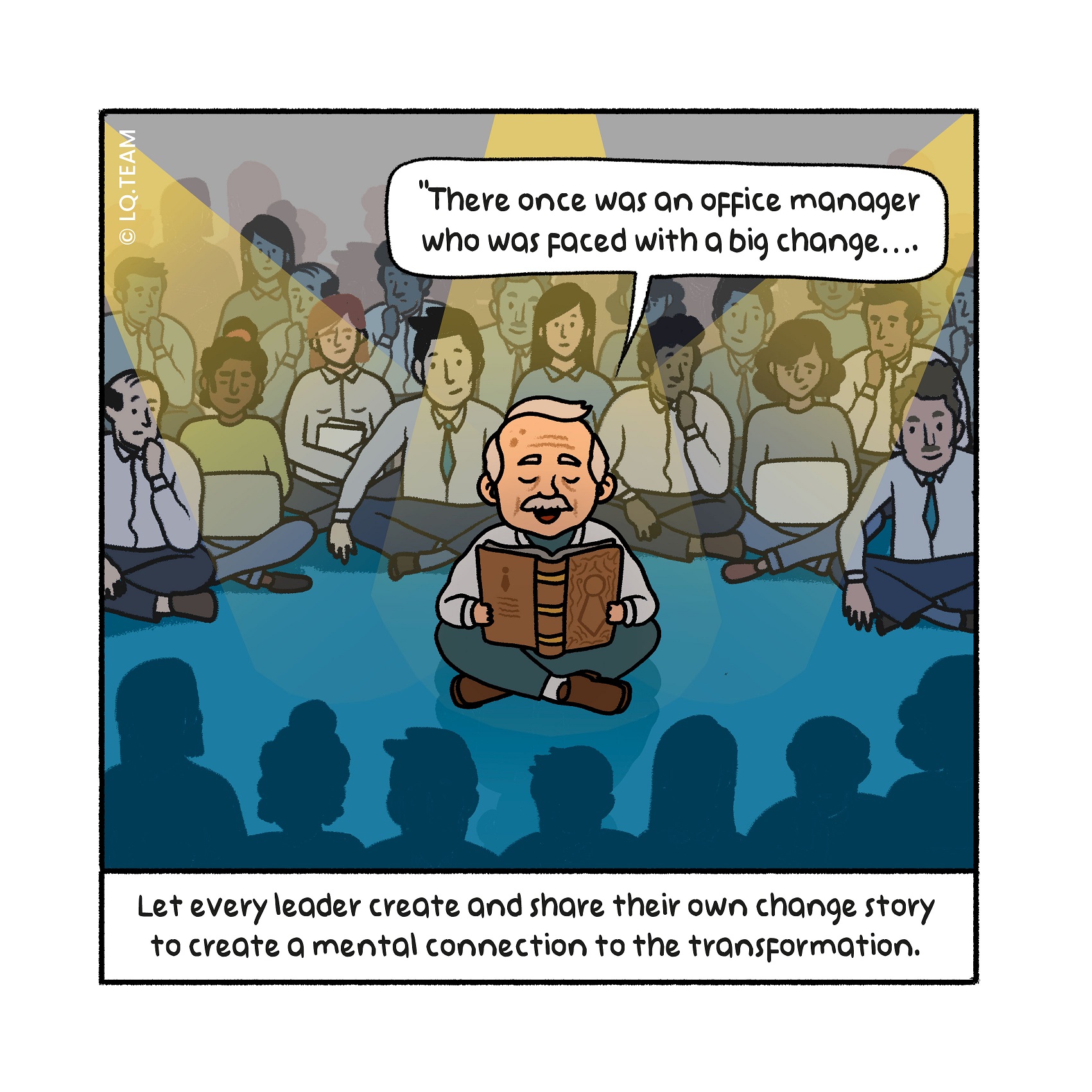
The nut to crack: How do you ensure other leaders pull as hard as you do?
Many change initiatives get bogged down in the middle layers of the organi- sation. Communication falters, and ownership of the change is not felt. This can lead to the feeling that you are on your own as a leader. Why do you always have to do all the lifting? Why can’t others do a little more? This is an unpleasant and energy draining feeling. The question is, how do you prevent it or break the cycle?
Nutcracker: Let everyone create and share their own change story To gain ownership of the change in every part of the organisation, it is es- sential that every manager mentally subscribes to the change process and feels genuinely responsible for its realisation. You can stimulate this sense of mental connection by asking every change leader to put their change story on paper; why do they want to realise this change, why do they believe this is necessary now, what don’t they believe, when do they feel a sense of person- al pride and what is needed for this? This is about authenticity, not techniques. You start this process by setting a good example and telling your story to the other leaders. You then ask them to do the same. By inviting them to share their own story out loud, the story gains meaning and creates an emotional connection with the content of the person who shares it. The following exam- ple explains what this might look like in practice.
Nutcracker: Let everyone create and share their own change story
To gain ownership of the change in every part of the organisation, it is es- sential that every manager mentally subscribes to the change process and feels genuinely responsible for its realisation. You can stimulate this sense of mental connection by asking every change leader to put their change story on paper; why do they want to realise this change, why do they believe this is necessary now, what don’t they believe, when do they feel a sense of person- al pride and what is needed for this? This is about authenticity, not techniques. You start this process by setting a good example and telling your story to the other leaders. You then ask them to do the same. By inviting them to share their own story out loud, the story gains meaning and creates an emotional connection with the content of the person who shares it. The following exam- ple explains what this might look like in practice.
Real-life example: The power of your own story
Joanna, a sales director for an organisation in the telecoms industry, wants to tap into a new market segment to secure the company’s growth ambition. She does what she can to realise this ambition. But there is a problem: she cannot make every member of her team coresponsible for the realisation of the goal. How does she ensure that the members of her management team, like herself, go all in?
Joanna does the following. She organises an afternoon workshop with her team, and asks them to write their interpretation of the growth journey as preparation. Why is it necessary now? What steps are needed to get it done? Why is that important now?
And what will go wrong if we don’t act? During the session, she starts sharing her story and allows her fellow management team members to ask questions and provide feed back. She then asks them to share their story with their direct colleagues. After the session, the mt members hold similar workshops with their direct reports.
Joanna subsequently takes it a step further, and turns this step into a ritual. Every quar ter she sets the example by retelling her change story, updated with the actual business results and examples of that moment. The other mt members do the same with their teams. This way, they inspire their people to continue the change journey.
Tip for change leader
You may benefit from inviting a professional with storytelling experience to provide feed back to everyone.
Tip for change enabler
Every leader is unique. Maintaining that authenticity in how the story is told is more important than whether it follows a specific structure. Provide coaching to achieve that.
Kernel: Ownership through “your story”
Allowing everyone to write their own change story creates an emotional con- nection with the message. The link is necessary to master the change and to lead it with hearts and minds. By embedding this structurally in every layer of the organisation and repeating this periodically, you can achieve an even more significant impact. Instead of a one-time storytelling training, it becomes an engine that propels change permanently. If you are wondering how to build this story best, please see Challenge 2.

